Multi-Touch Attribution: Guide to Different Models
Being able to understand the big picture has always been the key to success in the long run for businesses of all types and sizes. However, the devil has always been in the details and it takes a lot of small adjustments to survive in the long run.
While technology and the Digital Age have made business functions and process easy to execute, they have introduced many complexities as well.
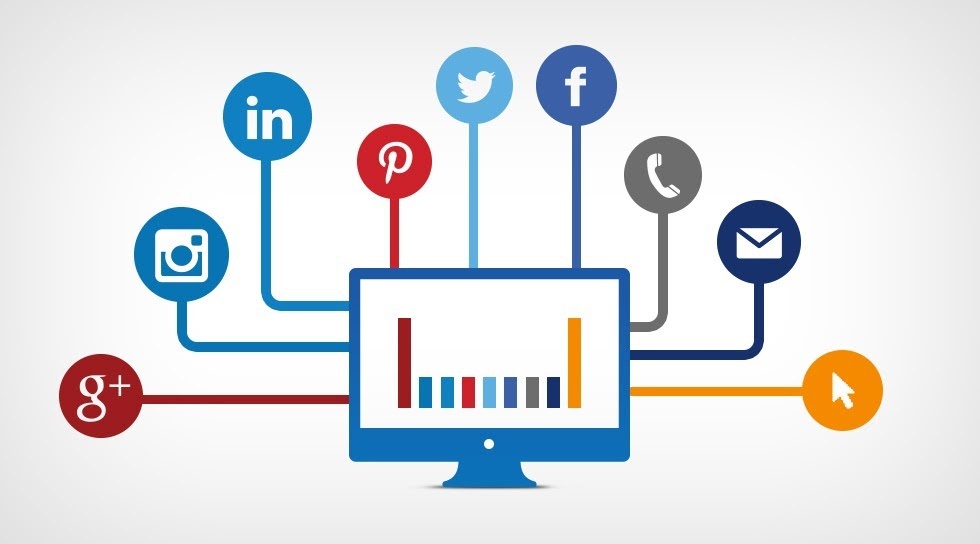
Image Courtesy -bluefountainmedia.com
The quest for understanding your customers and audiences better has led to an overflow of data for business which is at times hard to handle and utilize effectively.
Marketing Function is the one that benefits the most by utilizing data and data analysis. Knowing which marketing elements and touchpoints can be adjusted for better yields is pivotal information that can drastically benefit a business.
Marketing Attribution is what enables a marketer to understand how each marketing element and touchpoint perform and how they can be adjusted for better results.
What is Attribution in Marketing?
Let us understand what attribution is first before we head on to understanding its application in Marketing and Analysis. So, Marketing Attribution is the process of assigning credits to triggers that culminate in an outcome.
Consider this, you’re having a glass of chilled lemonade, it is sweet and you liked it. Marketing attribution tells you that the lemonade came from the fridge and it was sugar that made it sweet.
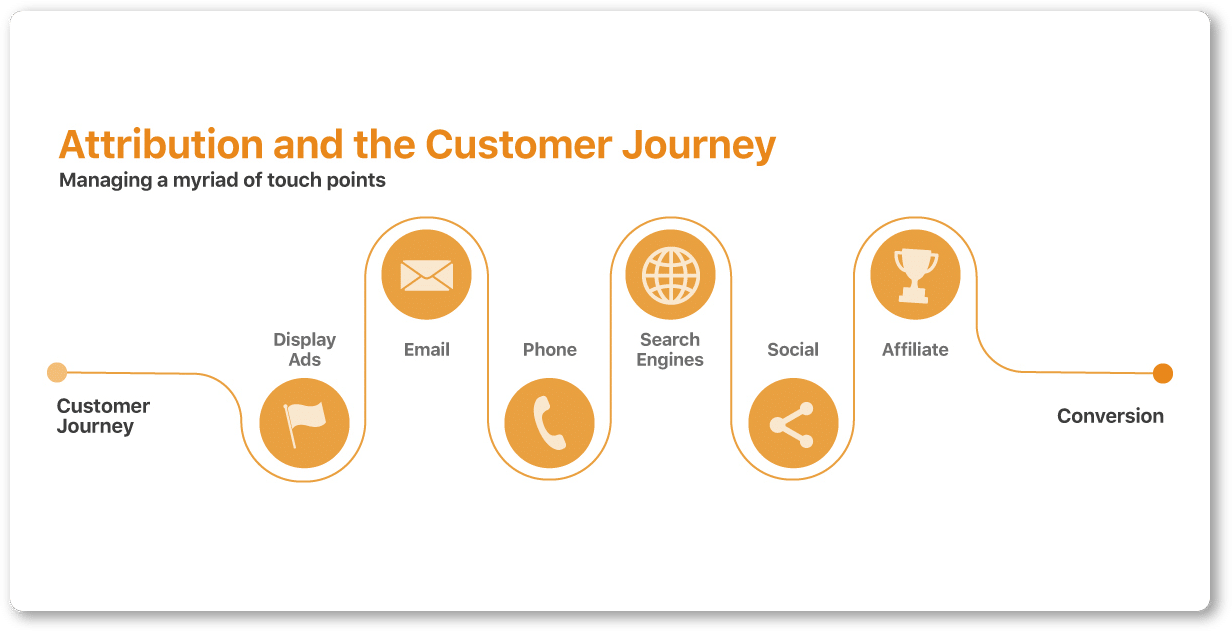
Image Courtesy – snov.io
Through Data Analysis, Attribution finds itself playing an important role in the Marketing function. It helps marketers find in-depth causations for certain outcomes in the marketing campaign by attributing credits at channel and component level in the marketing function.
While the digital age has transformed Marketing thoroughly and made it more effective, it increased the level of complexities involved as every marketing campaign came to comprise several channels, micro components, and variables, all of which greatly affected the overall effectiveness of a marketing campaign.
Thus, by using attribution to analyze marketing campaigns, it became possible for marketers to find out how well each channel, component, and touchpoint in a marketing campaign was performing.
This component-level insight into the performance of your marketing campaign can prove to be beneficial in many ways and offers the marketer a greater degree of control over the marketing campaign and its outcomes.
Thus, Attribution in Marketing provides actionable insights down to the component level. This insight can be used in multiple ways to better the marketing function.
Understanding the Need for Marketing Attribution
While businesses take notice of everything, the only thing they want to know is how certain data analytics techniques translate into growth and profits for their business.
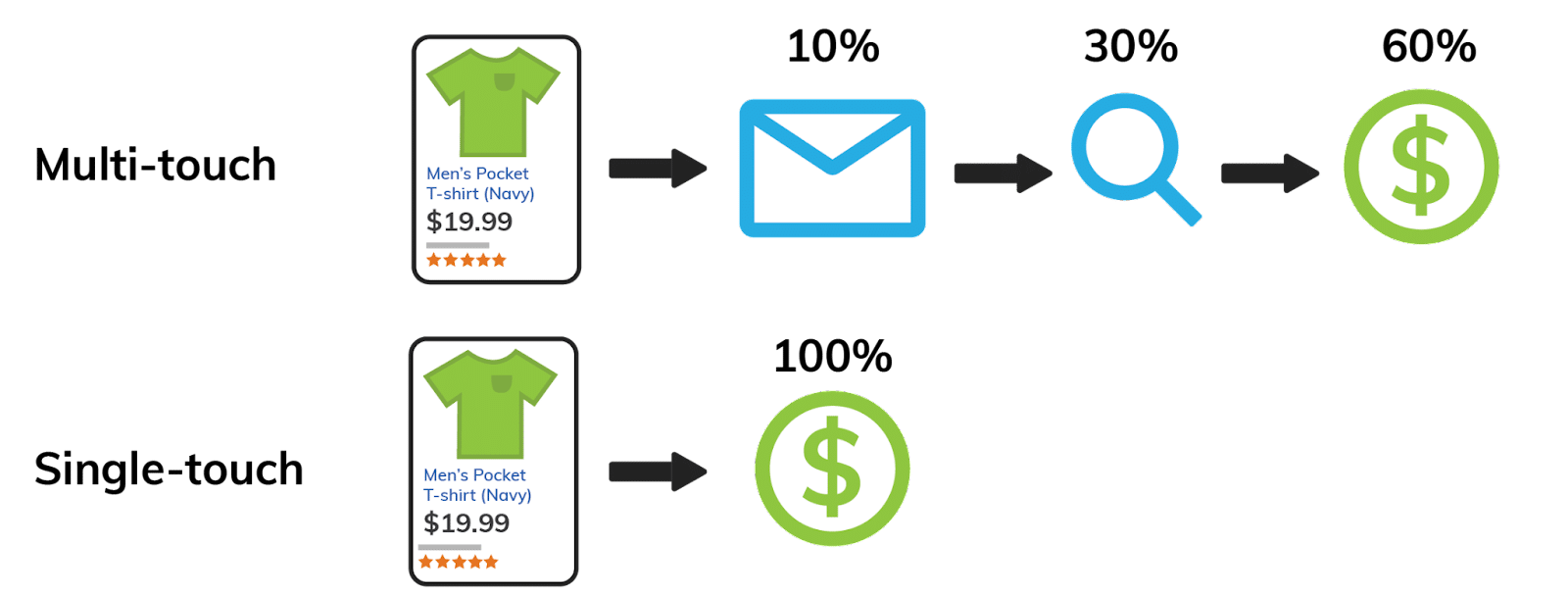
Image Courtesy – OktoPost
When it comes to Marketing Attribution, it serves multiple purposes, as in it provides opportunities for a business to improve in multiple functional areas through the actionable insights it provides.
Primarily, Marketing Attribution serves two main purposes, those are as follows:
1. Evaluating Marketing Channel wise ROI –
As stated earlier, marketing in the digital space involves using multiple marketing channels and strategies. Businesses, in an attempt to maximize reach and drive sales, opt for as many marketing channels as possible – website, social media, emails. There are several touchpoints that a lead will engage with before they convert.
The issue with this approach is that not all marketing channels and touchpoints yield enough results to justify the expenses incurred. With the fierce competition in the online space, cutting costs wherever possible is a necessity.
Marketing attribution identifies how channels and touchpoints lead to customer creation and how much return they provide in comparison to the costs incurred in using those channels.
This allows marketers to understand which channels are most effective and which are not. The ones that aren’t sufficiently effective can be dropped and the resources can either be conserved or reallocated towards the remaining marketing channels.
2. Enabling Component level Optimization for Marketing Campaigns –
There are a lot of functional components and touchpoints in a marketing campaign and each one can add positively to the success of the campaign. However, not every component and touchpoint functions as intended.
Marketing Attribution provides an in-depth insight into your marketing function by assigning credits to each component and touchpoint for their contribution towards converting visitors into customers.
By doing this, a marketer understands which components and touchpoints aren’t performing optimally and having this knowledge enables them to make changes in them to raise their level of effectiveness and in turn, their contribution towards conversions.
This significantly raises the productivity of the entire marketing function and almost ensures that the marketing campaign achieves all its set objectives. Small component level improvements have been proven to have big impacts on the overall performance.
Additionally, Marketing Attribution serves the following purpose:
3. Enables evaluation of Marketing Material –
Traditionally, marketing campaigns were evaluated as a whole and that too was after the campaign had been run. Marketing Attribution enables marketers to understand the potency of their marketing material, i.e. posts, visuals, videos, CTAs, etc.
Knowing this, a marketer can replicate the properties of the marketing material that has exhibited potency to materials that haven’t done well. All of these changes can be made while the marketing campaign is still running to boost its performance.
There are two types of Marketing Attribution Models, Single touch and Multi-touch Attribution. Of these, Multi-touch attribution is superior. So let us find out what it is and what makes it the better option.
What is Multi-touch Attribution?
Understanding the customer journey is an important aspect when it comes to marketing. Every customer takes a different path from being exposed to your brand or product to eventually making a purchase and becoming a customer.
Along this journey, the customer comes across various posts, ads, and marketing material from your marketing campaign on various social media and digital platforms. Each touchpoint the customer interacts with contributes to the process of converting them.
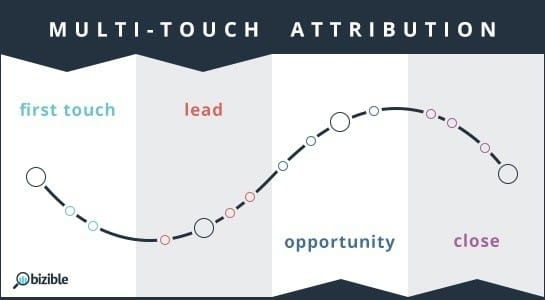
Image Courtesy – Business2Community
Multi-Touch Attribution considers all the touchpoints in the customer journey and attributes conversion credit to each touchpoint based on its contribution that led to the build-up of momentum culminating in the final conversion.
This consideration and attribution of all touchpoints in a customer’s journey are what make Multi-touch Attribution more accurate and superior in comparison to Single-touch attribution.
This was a simple way of telling how multi-touch attribution is better than Single-touch attribution. Let us consider all the advantages in detail now.
Advantages of using Multi-touch Attribution
1. Accurate Quantification of ROI –
The main issue with single-touch attribution modeling was that it assigned the complete credits of conversion to a single touchpoint. Practically, it is impossible that a single touch point’s influence was so great to single-handedly convert a lead.
Multi-touch attribution modeling does away with this approach and considers every single touch-point a customer has interacted with prior to conversion. This significantly raises the accuracy of the quantification of ROI.
Knowing how much every post and marketing element is yielding in terms of conversion credit can help marketers cut costs and revamp elements for better yields.
2. Allows for Personalized Customer Experience –
Multi-touch attribution works in real-time, so you can track what a lead is doing in real-time, know in which channel they are currently and how they have interacted with touchpoints until that point.
It is not difficult to predict where the next touchpoint might be in the customer journey and a marketer can tailor the marketing content or message to provide the lead with a personalized experience that raises the chances for quicker conversion.
Moreover, providing a personalized customer experience has multiple benefits, it doesn’t only raise the chances of conversion but adds to your brand value, helps grow customer sentiment towards the brand, and promotes customer loyalty.
3. Prevents Devaluation of touchpoints –
The most pressing issue with single-touch attribution modeling is that it completely disregards all the other touchpoints in the customer journey by assigning the conversion credits to a single touchpoint.
Every touchpoint contributes to the process of conversion and while the contribution is not always linear, with some touchpoints contributing more than another, it does not warrant complete devolution of all touchpoints barring one.
Multi-touch attribution modeling overcomes this major flaw associated with single tough attribution modeling. Depending upon which multi-touch attribution model you decide to use, the attribution model of assigning credit of conversion changes.
Now that you know what Multi-touch Marketing Attribution is and what makes it more accurate and superior than single-touch attribution for B2B, let us understand the different multitouch attribution models and how the credit attribution model differs in them.
Multi-touch Attribution Models
1. Linear –
The linear attribution model equally divides and assigns conversion credit to each touchpoint the customer interacted with throughout the customer journey. This attribution model is simple to use does not suffer from bias and provides a good view of the entire customer journey.
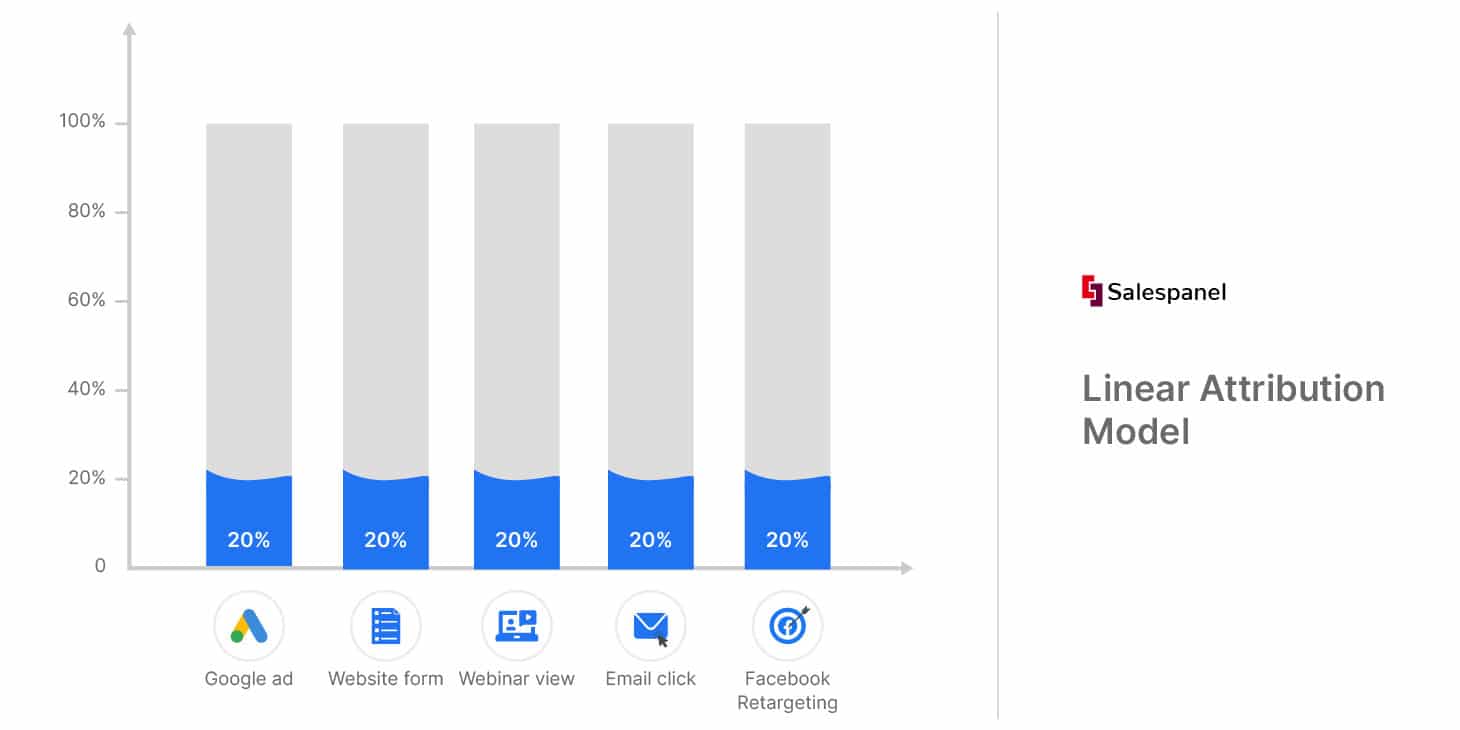
The drawback of opting with this model of attribution is that it fails to acknowledge the fact that not every touchpoint contributes equally to the conversion process. Some touchpoints will be completely missed while some will have a big impact.
We have an entire article written about Linear Attribution, which you can read here.
2. Time Decay –
This model works based on the hypothesis that the touchpoint closest to the final conversion contributes the most to the conversion and the touchpoints preceding it are in decreasing order of contribution.
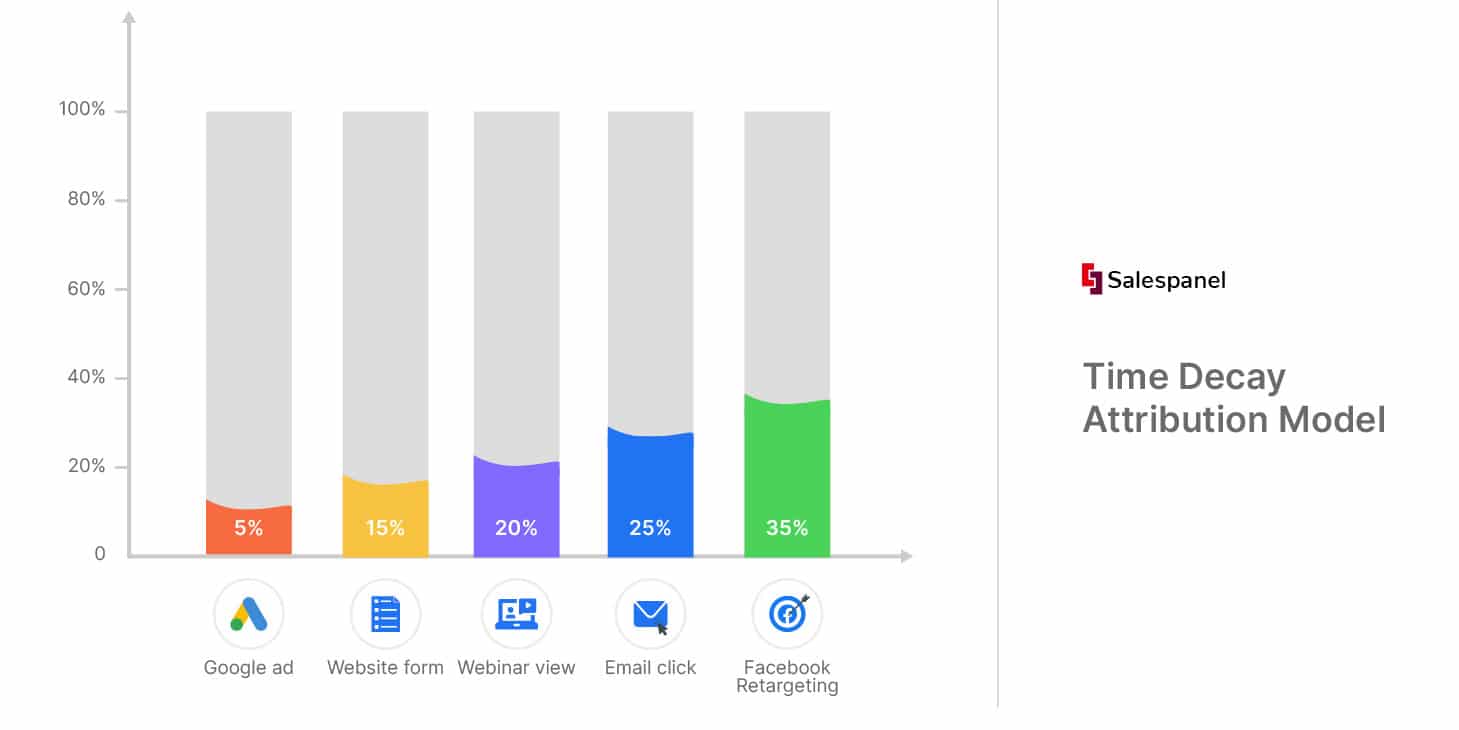
Accordingly, it assigns the highest proportional credits to the last touchpoint and the least to the first touchpoint with the rest falling in between. This model, however, fails to account for the nature of the touchpoint.
This attribution model is especially suitable for firms that have most of the work happening at the lower end of the funnel.
3. U-shaped –
This model assigns 40% conversion credits each to the first and the last touchpoint, while the remaining 20% is divided amongst the rest of the touchpoints.
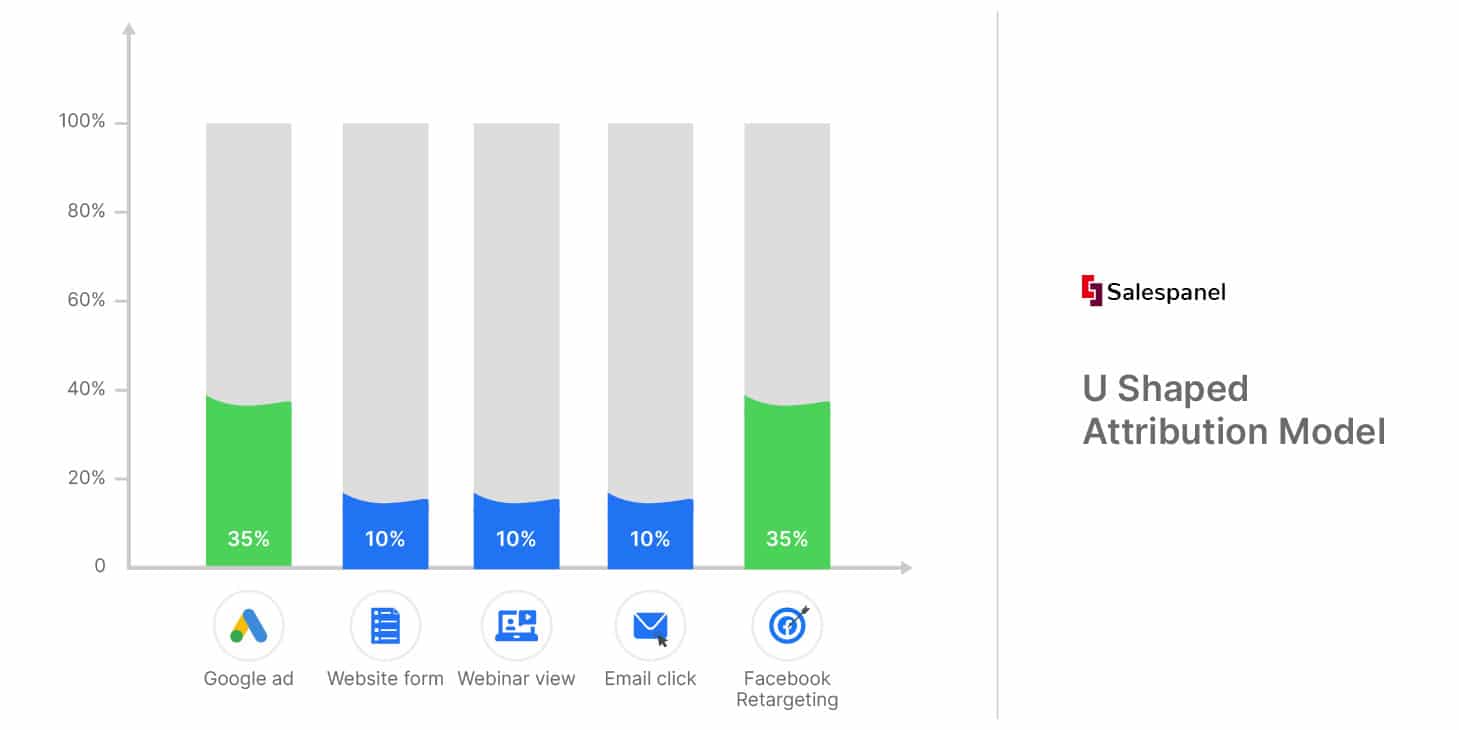
This model is useful if you’re trying to understand which touchpoint is the common entry point for the majority of the customers and which touchpoint is the final conversion point. This information reveals a lot about how your marketing campaign is working and what elements are performing the most.
4. W-shaped –
This attribution model is similar to U-shaped attribution but the only difference here is that a touchpoint in between the first and the last touchpoint is considered significant for maintaining the conversion momentum and thus attribution accordingly.
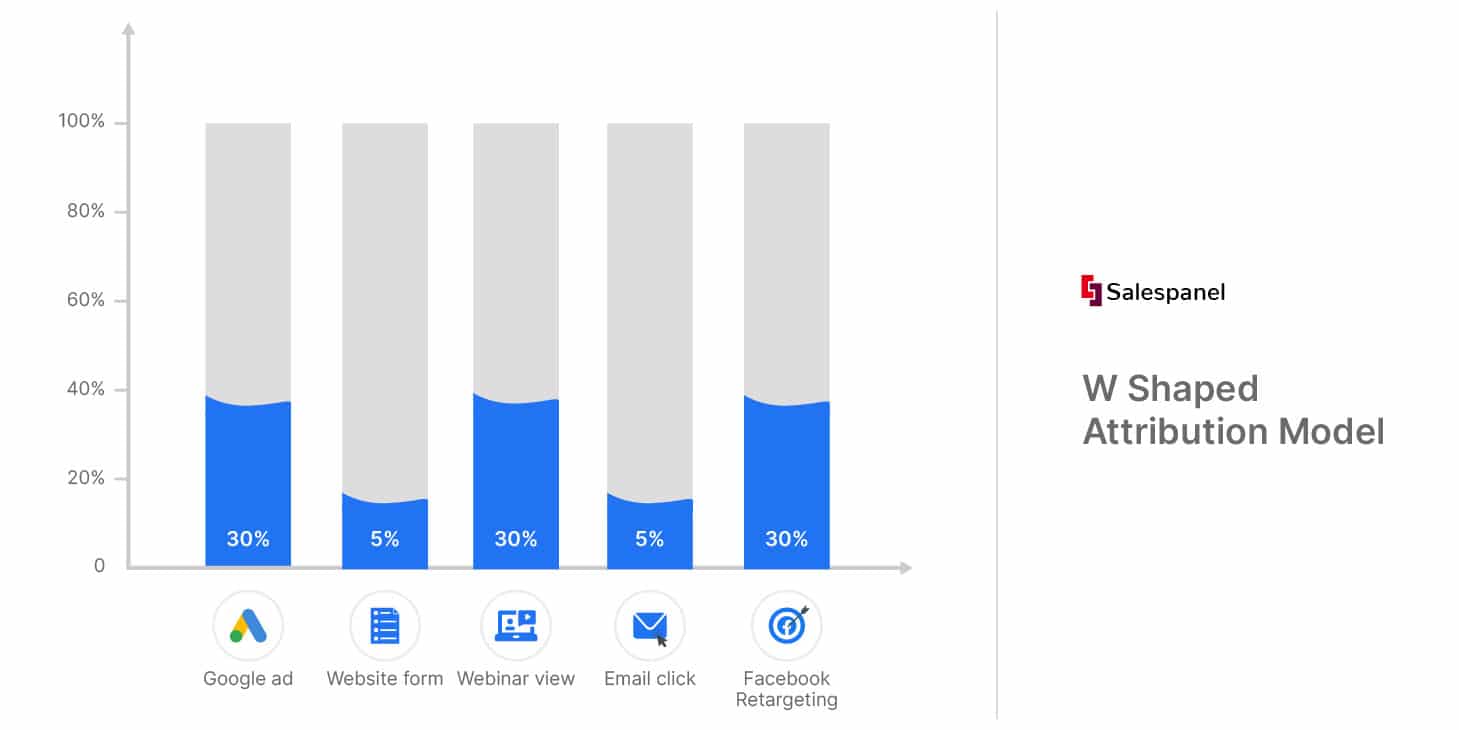
In this model, the first, middle, and last touchpoints are each credited with 30% of the conversion credit while the rest 10% is equally divided between the intermediary touchpoints.
This attribution model is well suitable for businesses that have a significantly long sales cycle and who need to understand which touchpoint helps maintain the momentum.
5. Custom Attribution –
The attribution models stated above are applicable to their particular use cases where they each are suitable for a particular nature of the sales cycle. In case none of those above are suitable for your business, you will need a custom attribution model.
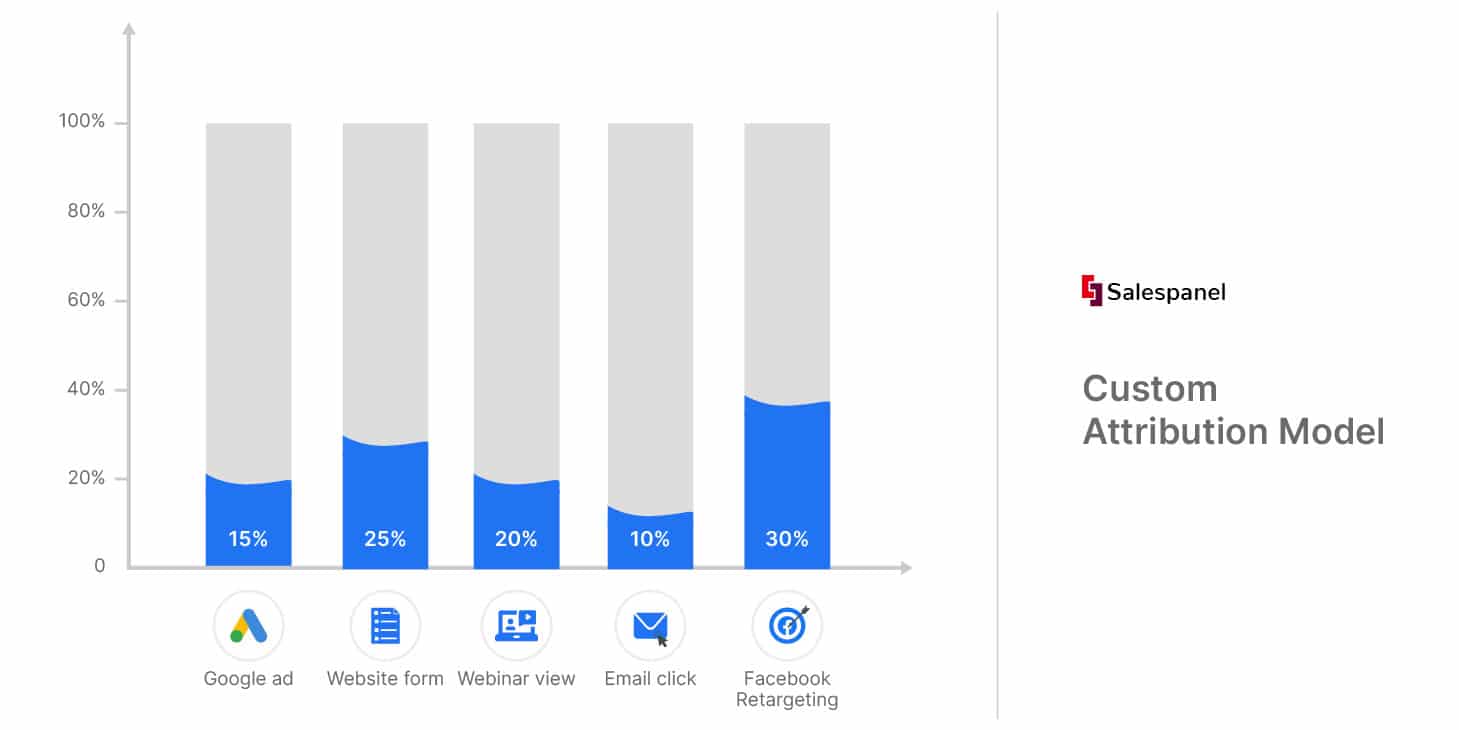
These models are created specifically for the nature of the sales cycle your business may have and in most cases requires an experienced marketer who has a good idea about how each touchpoint is potent and how much does it actually contributes to the process of conversion.
Though this model is time-consuming and complex to create and set up, it will fulfill your requirements in the best way possible for the unusual sales cycle of your business.
To conclude with
It is easier to understand the big picture in terms of Marketing but you will need Marketing Attribution to understand what parts come together for the big picture. Multi-touch Marketing Attribution is a powerful strategy that can enable small improvements in the marketing campaigns and functions that have big impacts.
Sell more, understand your customers’ journey for free!
Sales and Marketing teams spend millions of dollars to bring visitors to your website. But do you track your customer’s journey? Do you know who buys and why?
Around 8% of your website traffic will sign up on your lead forms. What happens to the other 92% of your traffic? Can you identify your visiting accounts? Can you engage and retarget your qualified visitors even if they are not identified?


